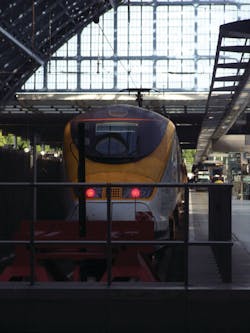UK: Stat-X Protecting Eurostar Trains
Eurostar trains were designed with channel tunnel safety in mind, and consist of two independent “half-sets,” each with its own power car. In line with Eurostar policy, continuous research is carried out to establish the very best means of protecting both rolling stock and passengers while at the same time complying with all current safety and environmental issues – including the Kyoto Protocol which forbids the use of Halon as a fire suppression agent.
On behalf of Eurostar, and responding to the Kyoto requirement for legally binding commitments for the reduction of greenhouse gases, Brush Traction engineers researched available fire extinguishing systems such as water mist, FM200, Novec 1230, inert gases and condensed aerosol systems as possible alternatives to the current Halon system installed. Their research clearly concluded that the technical leader was Stat-X.
Stat-X condensed aerosol fire suppression systems are distributed throughout Europe by Nobel Fire Systems. Over the last two years Brush, Eurostar, and Nobel have been working together to prove the effectiveness of the system to the Channel Tunnel Safety Authority (CTSA) and the Channel Tunnel Intergovernmental Commission (ICG), including a series of full scale mock-up fire tests at the French fire systems approvals and testing authority CNPP based in Vernon France. On successful conclusion and with final sign off from both the CTSA and the ICG, Eurostar awarded Nobel the contract in July 2012, due for completion in 2015.
Nobel Fire Systems has started the removal of the Halon and the installation of Stat-X systems. Work on the first two of the 28 trains is now complete.
